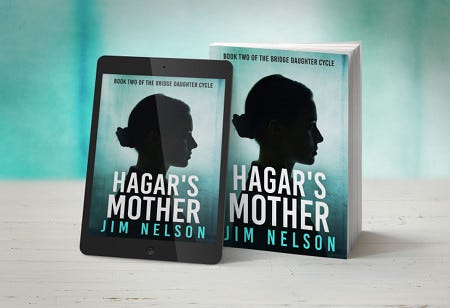Real artists ship
Knowing when to stop revising and start publishing
Maintaining a regular writing schedule may be difficult to achieve, but the logic is plain enough: The more time you make for writing, the more writing you get done.
A second aspect of getting your work published is more difficult to describe, because it’s much more subjective. It’s knowing when your book is finished: When to put it out there for the world to read. When to walk away.
I spent, without exaggeration, almost fifteen years writing my first novel. It was a bruising experience. I never found an established publisher for it. More tantalizing (and more painful), I found two agents who showed interest in it. (One of them read four separate drafts.) Both said it wasn’t quite right for them.
Over those fifteen years, I revised and polished and edited and proofread the novel umpteen times. I have half a dozen major separate drafts on my computer—some so distinct from the others, they really are separate novels. At one point, the novel was so long I had to break it up into two separate files, because the word processor couldn’t hold the entire book in memory without slowing to a crawl.
When I was in the thick of revising it, the mid-2000s, I’d forgotten Steve Job’s maxim “real artists ship.” I wish I’d remembered it when I was revising this novel. It might have saved me another ten years of anguish.
Walking away
Jobs was referring to projects within Apple circa 1983 (notably, the first Macintosh). Jobs viewed computer design as an art, much like automobile and interior design. In the realm of writing software, there’s a strong temptation to keep coding features, to keep fixing bugs, to make things just so—and to let release dates slip by in the process. There are numerous examples in the history of the field of this mistake being made, sometimes egregiously.
When Jobs told his engineers at Apple “real artists ship,” he was doing two things simultaneously:
Buttering them up: “You’re not a nerd, you’re an artist.”
Slapping some reality into them: “All your hard work doesn’t matter if the product isn’t delivered to the customer.”
As with coding software, there are similar temptations when writing a novel. The book can always be improved. I’ve seen writers spend years on one, thinking another edit pass is going to fix all its problems, or going back and tearing the book apart to restructure the chapters or add or delete sub-plots. Writers too often develop a romantic ideals of perfection in said art.
The heartbreaking part? Most of those books never see the light of day. They sit on a computer hard drive gathering digital dust. To complete the artistic cycle, the artist must submit their work to their audience. Real artists ship.
(This is not a judgment about people who write for themselves—people who keep daily journals or diaries, for example. If you set out to write a novel with no intention of publication, that’s absolutely your choice. But most people who start a novel have in their head at least a fuzzy intention of other people reading it.)
One of the biggest decisions I made in my writing career was learning to walk away from that first novel. I knew it was publishable, I just couldn’t find a publisher. And I knew it was readable, because I’d heard back from several early readers who said they liked it. (Maybe not loved it, but at least liked it.) Walking away from that book was a major lesson for me.
In that case, “walking away” meant salvaging the best chapters from the many drafts I had lying around and giving the assembled novel one more edit pass (mostly for typos and grammar). At the last minute, I rewrote the final chapter because none of the other draft’s conclusions worked.
I converted it into an e-book, designed a cover (which you should never do, but that’s a subject for another time), and put the novel up on the major marketplaces.
It never really sold. I’m lucky it has even ten reviews on Amazon. But the point is: Not long after publishing it, I began writing my next novel. Putting it up on Amazon, with all its imperfections, as, at least, a form of closure.
More than that, I made a pact with myself: I would publish one book a year. That goal forces me not only to schedule regular writing time—to write, edit, and revise pages—but also to let go of the novel after a reasonable amount of editing and send it into the world.
Walking away from a novel might mean not publishing it. If the book is severely compromised, keeping it in the drawer, so to speak, might be for the best. Not only are you letting go of it, you’re freeing yourself for your next novel, which just might be the ticket to success.
In either case—publish or bury—learn to walk away from work when you’ve reached the endpoint.

Hagar’s Mother is the second book in the Bridge Daughter Cycle.
Single mother Hanna Driscoll struggles to raise her thirteen-year-old “bridge daughters,” twins born pregnant with Hanna’s children. In six weeks the girls will give birth and die, leaving Hanna with two infants to raise. Hanna’s busy life is shaken when an activist threatens to rescue her bridge daughters from their fate and kill the children they bear.
This speculative-fiction series has received praise from numerous readers. Those wishing to start should begin with Bridge Daughter. All three books in the series are available in a Kindle boxed set.
More information on Hagar’s Mother can be found at j-nelson.net
